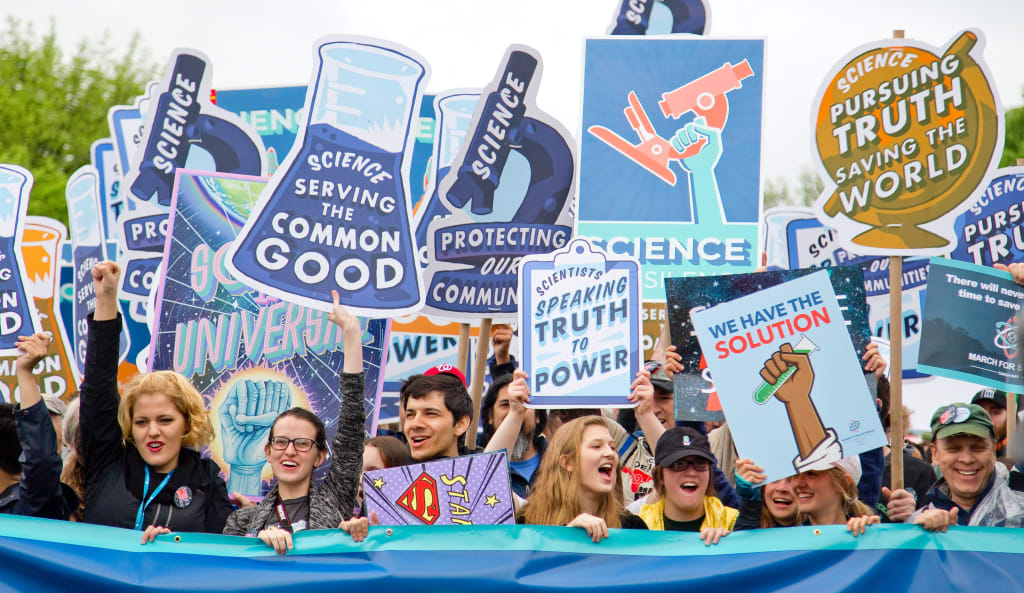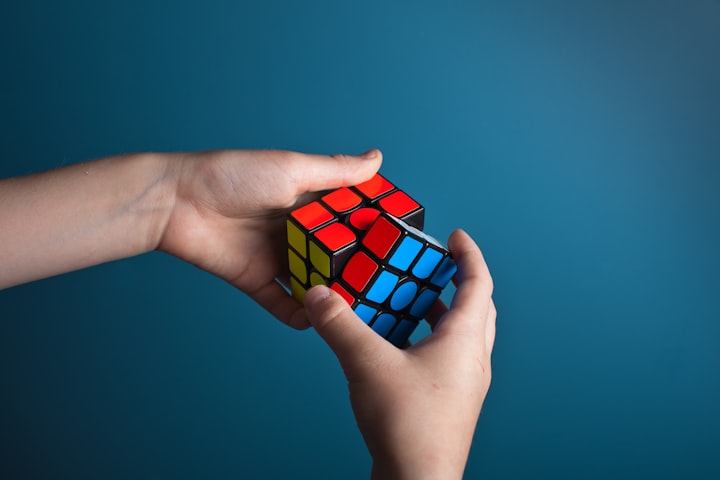The Secret to Successful Science Education
Why do Young Learners Lose Interest in Science? We’re Teaching it Wrong.

Science is one of the greatest innovations of humankind. It will become even more of an imperative discipline to our species’ sustainable continuation in the coming decades. With near-inevitable carbon emission-induced chaos, overpopulation, food shortages, and more, our future workforce needs to exponentially increase our rate of discovery and innovation to counteract these disasters.
And yet, studies over the past few years have found troubling perceptions of science. Many students find themselves discouraged due to perceived difficulty, others are dissuaded because they believe they’re too feminine for science. We are failing to inspire students to find interest in the world around them, resulting in a decline in science interest when we need it the most.
Despite this, there’s still an ounce of hope. With some modifications to the way we teach STEM, we won’t just reverse the decline in scientific interest, we’ll also have a shot at saving our species from its own failures.
The Scientific Method
We start off on the wrong foot from the onset of most science classes. We teach the scientific method like it’s a separate process from the rest of science. Once our students can repeat it, we abandon the whole notion and move on to the next lesson. Science builds upon itself, with this principle at the foundation of every revelation. Instead of casting the scientific method aside, we must bake it into the way students learn their science.
Implementation of the scientific method allows students to ask their own questions, investigate what they’re interested in already, and learn through projects and actions, rather than through rote memorization. Plus, when their curriculum does require that sort of study, they’ll more easily understand why it matters; they’ll make connections to tangible activities.
Into the Unknown
We still know so little about this universe. Scientists still ponder questions that seem, on the surface, rudimentary. Biologists still have no distinct definition of a species, chemists are still working on what makes up matter, physicists still don’t totally know what matter is made of. And yet, we present science as if everything is already figured out. We talk about discoveries in the past as if they were sudden and final. We make innovations and revelations to be the genius of singular minds who had an unattainable wealth of understanding.
Science is a field for explorers. In our well-explored world, knowledge is earth’s final frontier waiting for adventurers to appreciate it. There are so many more questions that need answers and an endless amount of scientific papers that conclude in, “More research is necessary”. It’s a shame that this side of science is saved for college courses. As a student, my greatest thrills came from hearing professors say “We’re still working out why that happens” or “No one in the field has a clue about that yet”. Those unanswered questions elicited daydreams of field research and the formulation of experiments.
Imagine if we told that to children too. At the age of incessant why's and how's, imagine the gears that would start turning when they hear, “We don’t know yet, but you could figure it out.” Instead, some we tell students to focus on the exam material instead of getting carried away. We even go so far as having tests be the labeling of diagrams and multiple-choice questions. In this design, there’s no room for curiosity to blossom; there’s only time for memorization and regurgitation. Plus, it penalizes one of the best parts of science disciplines: learning from mistakes.
Getting in Wrong
One of my favorite parts of upper-division undergraduate ecology courses was the chance to be academically and egregiously wrong. In field courses that required independent study, we were tasked with designing, executing, and analyzing personal experimental research. As amateurs, our hypothesis didn’t always end up being correct. Those results were the greatest teachers. The greatest of those classes had scientists that celebrated what was learned from the worst mistakes and poorest guesses.
To use a semester’s worth of knowledge and pose a supposition only to have nature disagree or to discover a major shortcoming of your study’s design is fundamentally educational. With a collection of teachers that search only for their students to learn and present their experience, scientific education becomes not just custom for the needs of each student, but also personal. Students who gain the ability to ask questions regarding topics they care about will gain a sense of ownership of their studies. It’s their question, their experience, and their own education.
Heroes on Pedestals
Beyond the design of our courses, we also paint the greats of science to be static. We fail to show their progression of understanding and the discoveries that came before them that made their success feasible. We glance over the guesses they got wrong, the goofy things they did, and the way they acted outside of their academic writing style. Through idolization of the greats of science, scientists have accidentally been made to be stuffy and inhuman, not something a child could relate to. We must highlight how deeply human those “greats” are. Showcasing Darwin’s adoration of pigeons, Einstein’s love for childrens’ television into adulthood, Ada Lovelace’s rebellious escapades and distaste for poetry, or Rosalind Franklin’s love for being confrontational with her peers, we can help young ones see themselves among them. Scientists have never had a constant, professional decorum, and our image should reflect that if we want young people to aspire to be like them.
Inspiring the Next Generation
Above all else, we must keep curiosity alive in our young students. Every child is born curious. As soon as they’re capable of speech, they ask questions. As soon as they can manipulate their environment, they experiment with it. It’s our responsibility, as educators and guardians, to nurture the spark inside these little scientists. To keep curiosity alive, we must allow them to wonder, to test, and to ask. We must encourage the scientific spirit; the sense of fascination without penalty and the delight that comes from learning despite being wrong.
For the sake of our species’ future, we must foster a love of science in our children that lasts into adulthood. Only then can we develop a society wise enough to reverse our failures and improve upon our best successes. Supporting the growth of curiosity will save us. Only then can we embark upon the journey to understand.
--
This article was originally posted to oliviadobbs13.medium.com.
About the Creator
Olivia L. Dobbs
Science Enthusiast, Naturalist, Dreamer, Nerd.
I crosspost my Medium articles here :)
You can find my main account on Medium: https://medium.com/@oliviadobbs13
Check out my science! -> bit.ly/DobbsEtAl






Comments
There are no comments for this story
Be the first to respond and start the conversation.